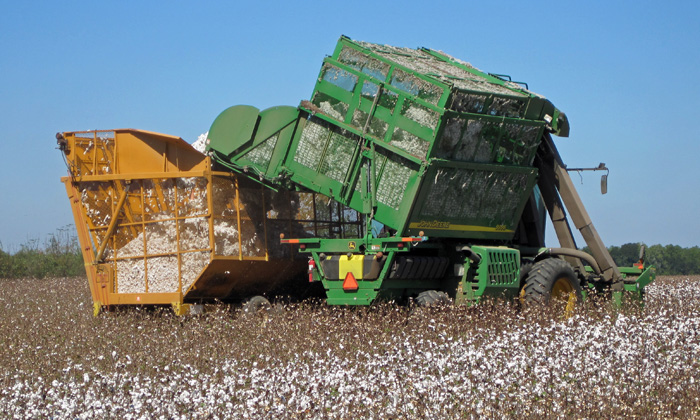
Using the correct engine lubricant with a proper maintenance schedule is essential for long tractor life, and to ensure equipment is running well when you need it most at harvest time. Photo credit: Doug Mayo
Farming enterprises in the 21st century require many costly inputs to even have a chance of competing successfully. Equipment such as tractors, truck and harvest machinery are necessary, but a major long term expense.
Thorough and regular maintenance is required to get the best performance and longest life from any internal combustion engine powered rolling stock. Engine oils are a key maintenance component, but the array of choices can be confusing.
Frequently the first consideration is the viscosity, a measure of the oil’s thickness. Higher number ratings indicate thicker, more viscous oils. This ranking is an indication of how well the oil flows and the protection it provides to moving parts.
Modern multi-viscosity oils provide the correct flow characteristics across a broad range of temperatures. The equipment manufactures’ handbook will make recommendations for the correct viscosity ratings to be used.
The W following the first number stands for “winter” (not weight) and indicates the cold-start viscosity at very lower temperatures. The range is achieved by additives called viscosity index improvers which thicken the oil as it heats.
Another consideration is whether to use conventional or synthetic oil. Each has distinct advantages, with the cost advantage going to conventional which is also known as mineral oil.
Synthetics are classified as Group I, II, III IV or V. Groups I, II and III are refined from oil pumped from wells. Group IV and V are chemically manufactured from modified materials.
The higher group rating indicates lower sulfur content and a higher viscosity index, an indication of the oil’s ability to reduce friction. Both are important features for modern engines.
The term “Ester” on the label is reflective of Group V oils which have premium properties. These features include high detergency, important for engine cleanliness, and exceptional lubricating qualities.
As with the viscosity requirements, the equipment manufacturer will recommend the type of oil required and a timetable for changing. Strictly following this maintenance schedule will promote long engine life and minimize costly repairs at critical times.
For more information on this subject:
-
American Petroleum Institute’s Engine Oil Guide
- The Federal Reserve’s Beige Book Outlook for the Near Future - August 9, 2019
- Creeping Indigo: Get Ahead of the Problem Now - March 1, 2019
- Horse Hooves Need Extra Care in Wet Pastures - February 15, 2019
